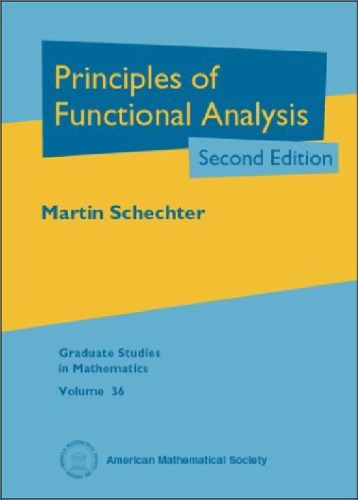

Most ebook files are in PDF format, so you can easily read them using various software such as Foxit Reader or directly on the Google Chrome browser.
Some ebook files are released by publishers in other formats such as .awz, .mobi, .epub, .fb2, etc. You may need to install specific software to read these formats on mobile/PC, such as Calibre.
Please read the tutorial at this link. https://ebooknice.com/page/post?id=faq
We offer FREE conversion to the popular formats you request; however, this may take some time. Therefore, right after payment, please email us, and we will try to provide the service as quickly as possible.
For some exceptional file formats or broken links (if any), please refrain from opening any disputes. Instead, email us first, and we will try to assist within a maximum of 6 hours.
EbookNice Team

Status:
Available0.0
0 reviewsFunctional analysis plays a crucial role in the applied sciences as well as in mathematics. It is a beautiful subject that can be motivated and studied for its own sake. In keeping with this basic philosophy, the author has made this introductory text accessible to a wide spectrum of students, including beginning-level graduates and advanced undergraduates. The exposition is inviting, following threads of ideas, describing each as fully as possible, before moving on to a new topic. Supporting material is introduced as appropriate, and only to the degree needed. Some topics are treated more than once, according to the different contexts in which they arise.
The prerequisites are minimal, requiring little more than advanced calculus and no measure theory. The text focuses on normed vector spaces and their important examples, Banach spaces and Hilbert spaces. The author also includes topics not usually found in texts on the subject. This Second Edition incorporates many new developments while not overshadowing the book's original flavor. Areas in the book that demonstrate its unique character have been strengthened. In particular, new material concerning Fredholm and semi-Fredholm operators is introduced, requiring minimal effort as the necessary machinery was already in place. Several new topics are presented, but relate to only those concepts and methods emanating from other parts of the book. These topics include perturbation classes, measures of noncompactness, strictly singular operators, and operator constants. Overall, the presentation has been refined, clarified, and simplified, and many new problems have been added.